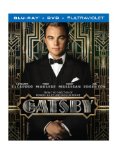| Reviews & Columns |
|
Reviews DVD TV on DVD Blu-ray 4K UHD International DVDs In Theaters Reviews by Studio Video Games Features Collector Series DVDs Easter Egg Database Interviews DVD Talk Radio Feature Articles Columns Anime Talk DVD Savant Horror DVDs The M.O.D. Squad Art House HD Talk Silent DVD
|
DVD Talk Forum |
|
|
| Resources |
|
DVD Price Search Customer Service #'s RCE Info Links |
|
Columns
|
|
|
Great Gatsby, The
Great? Not by a longshot.
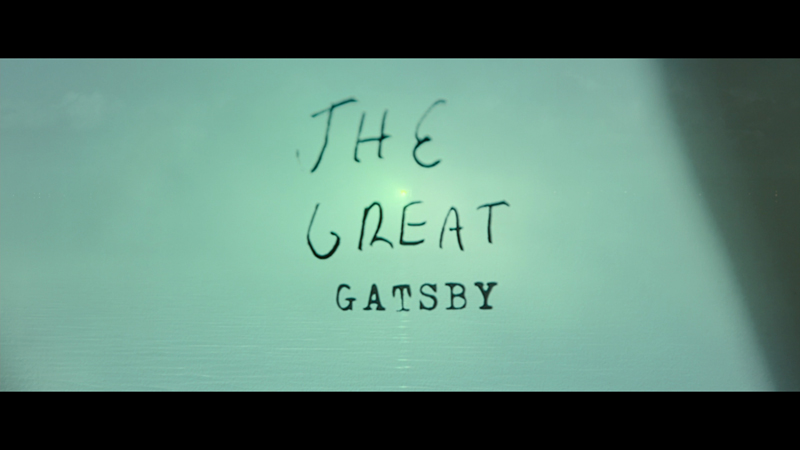
Loves: Baz Luhrmann's Red Curtain Trilogy, artistic films
Likes: The Great Gatsby (the novel), good adaptations
Dislikes: Excessively long films
Hates: When favorite directors disappoint
The Movie
It would be surprising if anyone today first read F. Scott Fitzgerald's The Great Gatsby by choice, as it's usually first introduced as required reading in school. For me, that occurred in college, where I may have been a touch more ready to comprehend its theme than those who first discovered the world of Jay Gatsby in High School (I was instead inflicted with the works of Barbara Kingsolver and Amy Tan, which didn't speak as well to me.) I quickly took to the novella's themes of identity and the meaning of success, as well as Fitzgerald's ability to paint a picture of a long-gone time full of vital energy. Perhaps its the economy of words, perhaps its the setting (the book takes place in a fictionalized version of my home of Long Island), perhaps it's just great writing, but it is a novel that's long stuck with me.
Thus, when it was announced that one of my favorite directors, Baz Luhrmann, the mad genius behind Moulin Rouge!, would be leading the latest adaptation of the book, my anticipation couldn't be much higher (despite my misgivings about the casting.) The material, set amongst the artistic and capitalistic, between the lower class and the upper crust, amidst the opulent extravagance of the Roaring ‘20s, seemed tailor-made for the man who practically defined "culture clash" with his previous films. Considering his success at re-casting the work of Shakespeare for the modern era, it seemed like he was the perfect man for the job. However, after watching all 142 minutes of his sprawling, yet intimate film, I was left wondering if perhaps Luhrmann's in a bit of a slump, following his well-made, but subdued Australia with this, frankly boring adaptation.
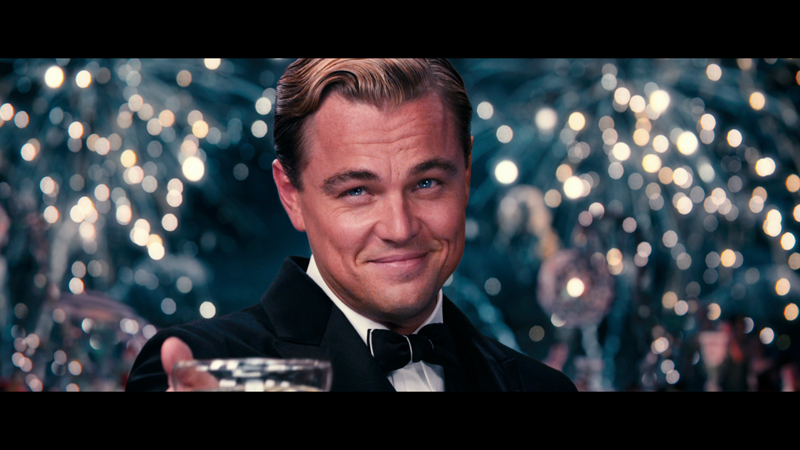
With all its grand parties and incredible settings and lavish period costumes, Luhrmann is well within his comfort zone on this film, but it never quite takes flight the way a fan of his would expect. Part of it is a runtime far longer than necessary (there's practically a minute of screentime for every page of the book) and an unfortunately explainable but completely indefensible need to simplify and explain all the more nuanced elements of the story. It feels like any bit of plot that's less obvious than being completely visible is explained via gratuitous dialogue. Speaking of the dialogue, despite DiCaprio and Edgerton's best attempts (neither Mulligan or Maguire impress much,) it's made an awkward transition from the page to the screen. Being direct with Romeo + Juliet worked because it was written to be performed, not read. The less said of the excessive narration by Nick the better. One wonders if a half-hour could have been shed just by not having Nick hold your hand along the way.
Of course, the film is undeniably beautiful, as anything Luhrmann touches is likely to be. Though the heavy emphasis on visual effects has left several portions looking too artificial, on a whole the movie achieves an intricacy and style that captures the time period precisely (particularly when Luhrmann takes inspiration from the era, utilizing old-school optical styles effectively.) The same goes for the music, despite Luhrmann's frequent swapping of modern music (specifically hip-hop) for the Jazz Age's titular musical genre. It wasn't just an attempt to speak to modern audiences, but to give modern audiences something like the feel of what an emerging underground musical sound was like. The result works in that regard, but it doesn't come close to the incredible energy that he manufactured with the genre-mashing of Moulin Rouge!.
Oddly, as the film started to unreel, I had a strange sense of deja vu, and realized it felt a lot like Sucker Punch, director Zack Snyder's incomprehensible blending of genres and visual panache that similarly managed to bore despite featuring an abundance of on-screen interests. Looking back at my review, ironically I mention how one scene could have easily been a part of a Luhrmann film. Considering how these once highly-promising artistic auteurs have oft disappointed their fans of late, perhaps there's something to be said for separating the roles of writer and director. If anything, perhaps we could empower their editors a bit more.
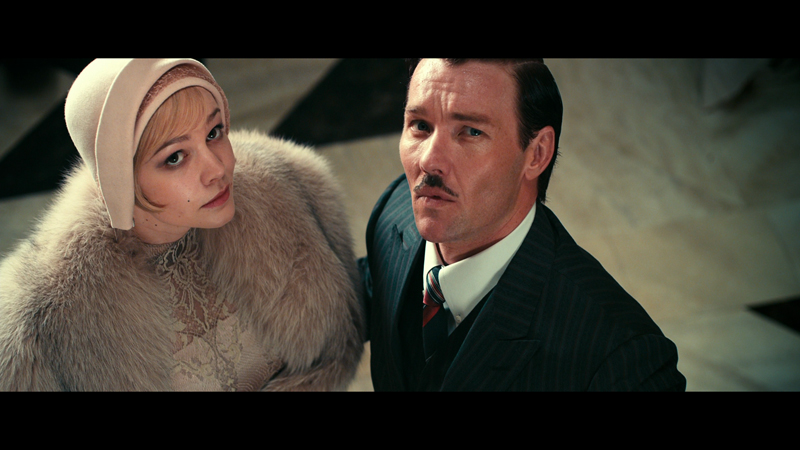
The Discs
This film arrives ina two-disc set. one Blu-Ray disc and one DVD, in a standard-width BR keepcase, which is inside a stylish embossed, foil-enhanced slipcover. The disc features the usual plain, layer-cake-style menu, offering the option to watch the film, select chapters, adjust languages and check out the extras. Audio options include an English DTS-HD Master Audio 5.1 track and French, Spanish and Portuguese Dolby Digital 5.1 tracks, while English SDH, French, Spanish and Portuguese subtitles are available.
The Quality
The wide 1080p, AVC-encoded 2.40:1 transfer is simply stunning, capturing all the beauty that Luhrmann and his team injected into the film. There's an oddly heightened level of color in many spots (check out DiCaprio and Maguire's eyes or Gatsby's yellow car) but fleshtones are appropriate and black levels are nicely deep. The level of fine detail is ridiculous, helping the gorgeous close-ups and intense production design shine bright. There are some intentional imperfections to be found as Luhrmann takes inspiration from old newsreels and similar media of the time, but you'd be hard-pressed to find anything else out of sorts.
The DTS-HD Master Audio 5.1 track is sneaky in a way, because it's not often in-your-face, but when you notice it, it's impressive thanks to the sense of depth it creates in the soundfield. Dialogue is always crisp and clear in the center channel, when it mainly resides, but the surrounds often get work to do to create some of the more chaotic scenes where characters swarm across the screen. There's some very impressive directionality, and when the low-end makes an appearance, it does so with authority, though avoiding obnoxiousness.
The Extras
The extras on Australia were quite brief, which makes the line-up on the back of the box this time a welcome surprise. Though reading the list makes it feel like it could be a great deal of fluff, it's actually quite insightful, and Luhrmann's frequent involvement makes the collection of featurettes a solid look behind the scenes.
"The Greatness of Gatsby" (9:14) gets things rolling, serving as an overview of the film's pre-production effort, as Luhrmann talks about how he was inspired to make this film thanks to a lengthy train ride, while also covering the research that went into the film and the workshopping done with the actors. If you come away from these extras with nothign else, you will appreciate the work Luhrmann puts into his movies.
In "Within and Without with Tobey Maguire" (8:41), we learn that its something of a tradition to have a member of the cast cover the making of his films, and this time it was Maguire's turn. Though he obviously had some assistance with this well-structured production, he takes a peek at several elements of the production, chatting with several of the people involved and showing off the massive labor that went into the film's special effects.
The film's music gets the spotlight in "The Swinging Sounds of Gatsby (12:17.) Though some parts of the film's contemporary musical roster were obvious, there were plenty more involved, as you discover in this piece, via interviews with Luhrmann and composer Craig Armstrong, as well with Jay-Z, Florence Welch (of Florence & the Machine), Lana Del Rey (whose solid contribution I had actually not caught), Bryan Ferry and The XX. Getting to see a bit of how Luhrmann and Del Rey collaborated is one of the highlights.
"The Jazz Age" (15:43) is a bit like found material, utilizing Fitzgerald-centric bits from (Ken's brother) Ric Burns' epic New York documentary, along with some thoughts from Luhrmann. Among the topics covered (and related to the film) include the growth of NYC, the relationship between Fitzgerald and his wife Zelda, the effect of mass media and the financial crash of 1929. Getting real-world insight into a film is always interesting, so getting it from a top source like this PBS classic is just gravy.
The film's intricate costumes are the star of the 16:22 "Razzle Dazzle: The Fashion of the ‘20s" via an extensive interview with Costume Designer (and Luhrmann's wife) Catherine Martin. Reflecting on how societal changes are illustrated through fashion, she discusses the film's collaborations with Brooks Brothers, Tiffany & Co. and Prada, in recreating the look of the time. It's more than appropriate that such an important factor in the film's tone and authenticity get some recognition.
Luhrmann gets some more credit himself in "Fitzgerald's Visual Poetry" (6:55), as he talks about how the film tries to capture Fitzgerald's imagery in cinematic techniques, via the film's framing device and the visual appearance of words in the film, and how they were enhanced by the film's 3-D delivery.
"Gatsby Revealed" provides a quintet of scene-specific behind-the-scenes featurettes (a total of just more than 30 minutes). The pieces look at how the party spectacles were built (and why they were important), the work that went into Gatsby's iconic car (including the help of a certain late-night host), the cursed production of Daisy and Gatsby's first meeting in the film, the time at the famed Plaza hotel and Gatsby's key scene at his pool. Getting into such detail about these moments is just further proof of Luhrmann's focus on the craft of filmmaking.
The final true extra is a set of four deleted scenes (27:23 in all), but they aren't presented the same way most such extras are. After an intro from Luhrmann, he sticks around and walks us through these scenes. None of them are so world changing they need to be presented on their own, so having Luhrmann on hand to discuss them is appreciated. The same effect could have possibly been achieved via an audio commentary or alternate angle, but it didn't feel like anything was lost this way, and you get to check out an alternate ending that hews closer to the book.
Wrapping things up is a trailer for the silent 1926 adaptation of The Great Gatsby. Simply put, times have changed. It's interesting though to see where scenes from the two versions match up. Also included in the set is a DVD copy of the film and a code for an Ultraviolet copy of the film.
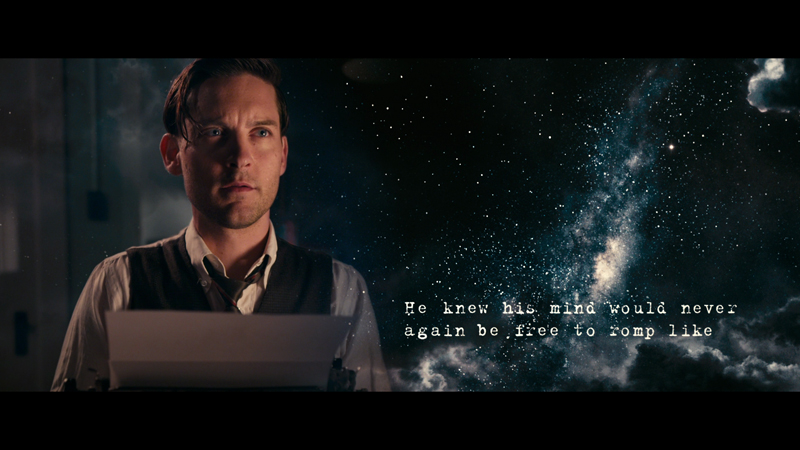
The Bottom Line
Maybe my expectations were too high, considering this film brought together a visionary director and one of the greatest books in American history, but in the end, it just doesn't live up to the promise of what could have been, even if it looks tremendous. The presentation is excellent and the extras are well-worth a look, even if they point to a lot of work that just failed to pay off. Fans of Luhrmann's previous should probably check it out, if only for the party scenes, but ownership should, like the wealth depicted in this film, remain the domain of a select few.
Francis Rizzo III is a native Long Islander, where he works in academia. In his spare time, he enjoys watching hockey, writing and spending time with his wife, daughter and puppy.Follow him on Twitter
*The Reviewer's Bias section is an attempt to help readers use the review to its best effect. By knowing where the reviewer's biases lie on the film's subject matter, one can read the review with the right mindset.
|
| Popular Reviews |
| Sponsored Links |
|
|
| Sponsored Links |
|
|
| Release List | Reviews | Shop | Newsletter | Forum | DVD Giveaways | Blu-Ray | Advertise |
|
Copyright 2024 DVDTalk.com All Rights Reserved. Legal Info, Privacy Policy, Terms of Use,
Manage Preferences,
Your Privacy Choices | |||||||









